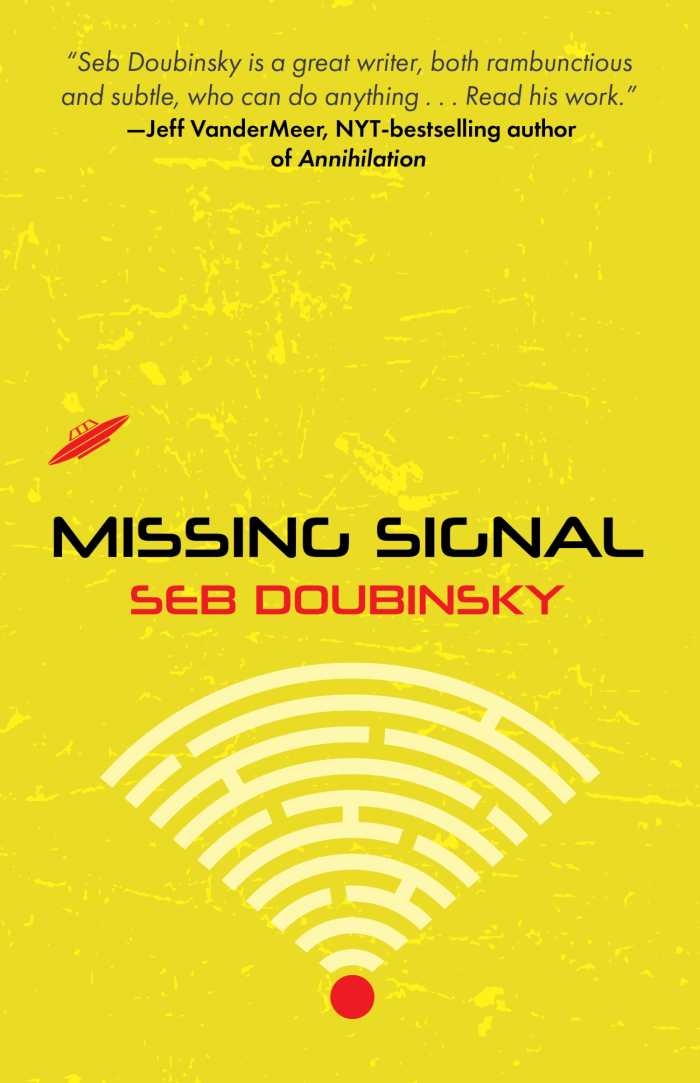Book of the Day Roundup August 27-August 31

A Song for the River
Philip Connors
Cinco Puntos Press
Softcover $16.95 (246pp)
978-1-941026-91-5
Buy: Amazon
Philip Connors has previously written about his many years as a fire lookout in New Mexico’s Gila National Forest. His new memoir, A Song for the River, reflects not only on the wilderness, but also on the lives of those who are touched by it. It’s a work at times sad and beautiful, at others reverent.
Much of the book focuses on the deaths of four people who loved the Gila River. A chapter set during the summer of 2014 relates the author’s friendship with John, a longtime fire lookout whom Connors views as a supportive brother, and who died in a freak accident in the wilderness. Other chapters describe three promising local students, committed to studying and preserving the natural beauty around them, who died with their teacher in a small plane crash.
In all these cases, Connors pays meaningful tribute to his subjects, conveying what made their contributions special and explaining what he learned from knowing them. There’s a palpable sense of loss. The book also includes reflections on the author’s own life and actions, including a new relationship, a serious health scare, and other important milestones.
Vivid prose describing the Gila area is ever-present, as when smoke forms “an angry aubergine band smeared across my northern horizon like a brushstroke from the hand of a demented god.” Love for the wilderness is compellingly conveyed. In moving snapshots of those touched by the Gila, A Song for the River shows the myriad ways that naturalists and nature touches others.
JEFF FLEISCHER (June 27, 2018)
Missing Signal

Seb Doubinsky
Meerkat Press
Softcover $14.95 (204pp)
978-1-946154-11-8
Buy: Local Bookstore (Bookshop), Amazon
In Missing Signal, Seb Doubinsky’s sly science-fiction romp, a counterintelligence agent named Terrence Kovacs is tasked with spreading false UFO claims.
The strategy is designed to keep hostile governments perpetually preoccupied. Since Terrence’s counterparts in enemy city-states are up to the same thing, Terrence’s job involves identifying and neutralizing opposing disinformation. Terrence lives under fifty-seven false identities, some of whom have become celebrities in the ufology world.
Using disguises, acting flair, and phony blog personas, Terrence fills each role so convincingly that he’s all but lost track of his true identity. His favorite word for his job, the stories he creates, and the stories he debunks is “bullshit.” It’s a never-ending chase down rabbit holes until he meets beautiful, seductive Vita, whose claims of alien origins he cannot disprove.
The story is told in terse chapters barely a page long. Though written in the third person, the viewpoint is always—and only—Terrence’s. Initially, Terrence’s wide-ranging ruminations seem like mental fluff mixed with the paranoia of an overworked mid-level employee, but the skillfully written snippets keep the pages turning and eventually resolve into a larger picture.
Terrence’s view of the world is profoundly melancholy, muffled by yearning for the 1960s and 1970s. There’s no sense of a present time or a more recent era. Even Vita’s alien claims take on the feel of a 1960s science fiction movie: she purports to be an emissary sent to warn Earth of an alien takeover, a message sweetened by sex and hallucinogenic drugs.
As Terrence’s seemingly inconsequential musings take on heft, the story becomes allegorical, reflecting contemporary real-world feelings of isolation and mistrust, issues like fake news, and fears that false personae created for internet consumption have become more relevant than the lives behind them.
Beneath the entertaining wrapper of science fiction, Missing Signal is a masterfully written work, both provocative and rewarding.
SUSAN WAGGONER (June 27, 2018)
The Italian Executioners
The Genocide of the Jews of Italy
Simon Levis Sullam
Oona Smyth, translator
Claudia Patane, translator
Princeton University Press
Hardcover $26.95 (208pp)
978-0-691-17905-6
Buy: Local Bookstore (Bookshop), Amazon
Early in The Italian Executioners, Simon Levis Sullam points out that Italy’s role in the Holocaust is often ignored, thanks both to the worse actions of its Axis counterpart and to revisionist attempts to absolve the country of guilt. That’s led to a relative dearth of material about Italian crimes of the era, and Sullam’s short and well-researched book is an important piece of that puzzle.
The book focuses heavily on the era of the Republic of Salò, the German-backed fascist state that existed in Italy from 1943 until the Allies and Italian partisans toppled it in 1945, though official anti-Semitism was earlier codified in the country’s 1938 racial laws. These laws banned Jews from certain professions and, as Sullam notes, included a racial census that the fascists relied upon when persecuting Italian Jews in the final years of the war. While Italy didn’t exterminate as large a percentage of its Jewish population as did some other European countries, Sullam details how involved Italian officials were in arresting, deporting, and executing many innocent people.
Part of what makes Sullam’s research so effective is his relaying of specific anecdotes. Survivors of concentration camps tell of paying Italian guides to help them flee to Switzerland, only to have the guides pocket the money and turn them in to the fascists. Other stories detail Italian officials searching for children in order to send the entire family to a camp, or opportunistic citizens turning in their neighbors in order to take their jobs or property.
These stories are thoroughly sourced and written engagingly, with the myriad anecdotes combining to paint an important picture of Italian complicity in the Nazi-led genocide. The Italian Executioners is a valuable addition to the literature on the Holocaust and a crucial reminder that fascist Italy was no safe haven.
JEFF FLEISCHER (August 5, 2018)
A Stranger’s Journey
Race, Identity, and Narrative Craft in Writing

David Mura
University of Georgia Press
Softcover $29.95 (272pp)
978-0-8203-5346-3
Buy: Local Bookstore (Bookshop), Amazon
David Mura’s A Stranger’s Journey is a thoughtful, nuanced, necessary look at how the subject of race is handled in fiction, memoir, and the creative writing classroom.
Mura’s book has two main goals: to explore questions of race and identity in writing and to present tools for effective storytelling. It is an instruction manual for writers and a call for more careful thinking, especially on the part of white readers and writers, about how racial identity is portrayed and discussed. It is also, in part, a memoir of Mura’s journey as a writer.
Mura’s arguments about race are powerful and convincing. Students of color who write fiction that addresses racism and injustice often get marginalized and dismissed as “too political.” Mura argues, instead, that all writing is political; assuming whiteness as a norm is itself a political statement. He backs up his points with illuminating close readings of texts by writers whose handling of race disappoints and by those who more successfully capture the complexity of their characters. His ideas about how authors write toward particular audiences are especially compelling.
The sections on story structure are similarly useful for writers struggling with their material. Mura’s suggestions are practical and are illustrated with compelling examples, including ZZ Packer, Mary Karr, and Maxine Hong Kingston. An appendix includes writing assignments to help solve common problems.
Mura’s account of exploring his identity as a Japanese American and struggling with story in his two memoirs adds a personal touch. His main audience is writers and writing teachers, but any reader interested in thinking deeply about how identity and race manifest themselves on the page will find the book valuable.
A Stranger’s Journey is an essential work of literary criticism and memoir, challenging readers and writers alike to think about writing, race, and identity in new ways.
REBECCA HUSSEY (August 5, 2018)
A Hundred Fires in Cuba

John Thorndike
Beck and Branch
Softcover $15.00 (330pp)
978-0-9972644-7-0
Buy: Local Bookstore (Bookshop), Amazon
John Thorndike’s A Hundred Fires in Cuba is a ranging, unflinching story of the Cuban Revolution, focused on the “beautiful commander, the hero of Yaguajay, the wildly famous Camilo Cienfuegos.”
One of Castro’s most loyal commanders, Cienfuegos was as well known for womanizing, dancing, and drinking as he was for his courage on the battlefield. This compelling novel captures the folk hero, cannily using an outsider’s perspective to shine light on matters of great historical import.
While he is in New York City, Cienfuegos falls in love with a young American photographer, Clare Miller. Their affair, which ends when he’s deported, results in a daughter whom he fears. Clare romanticizes the beautiful, powerful, rifle-toting comandante, but she harbors no illusions about the revolution or his qualifications as a parent.
The prose is elegantly crafted. It’s not flashy, but it is effective. Word choices are lean, taut, and purposeful. Just enough Spanish is sprinkled in to be authentic, making the book seem thoroughly researched and authoritative. Depictions of communicating in a foreign land are captivating, bringing to life the resultant displacement and alienation; some over-enunciate, and others “talk like auctioneers, too fast to understand.” Though this is clearly a work of fiction, the novel feels like a definitive account of a lesser-told narrative in a historically significant time.
Solid, fully realized characters—both real and fictitious—come across realistically, grounding the book. Clare’s psychology is especially well established.
A Hundred Fires in Cuba is a sophisticated historical novel that effectively deploys a love triangle to capture the essence of a remarkable figure and the historic period that produced him, laying bare the yearnings of the heart.
JOSEPH S. PETE (June 27, 2018)
Hannah Hohman
